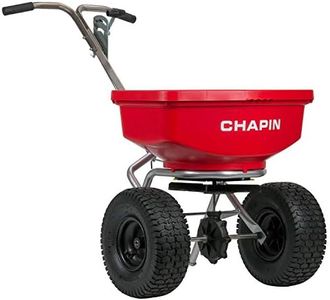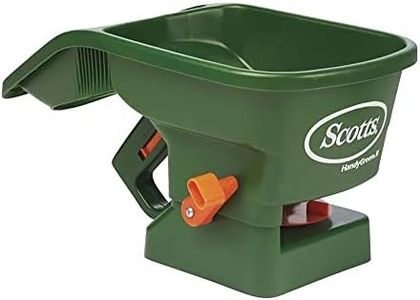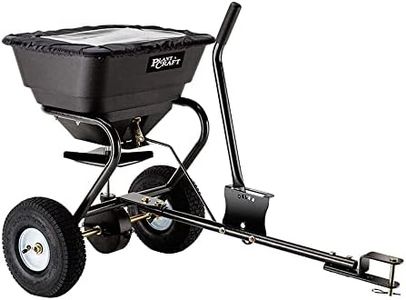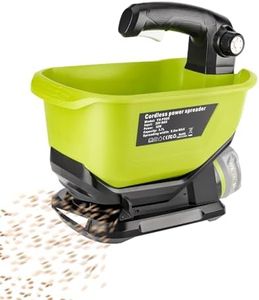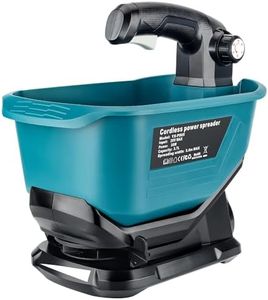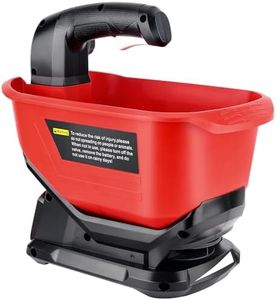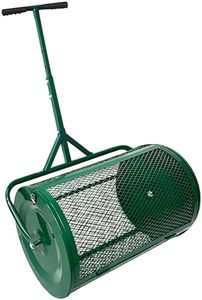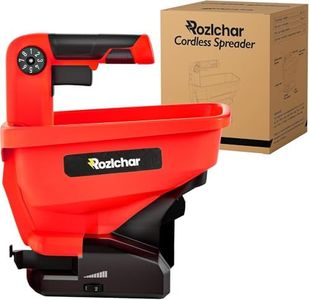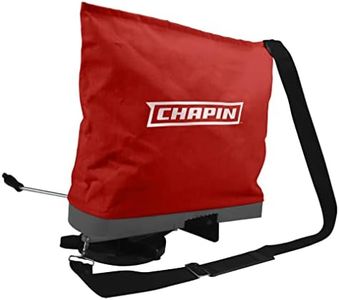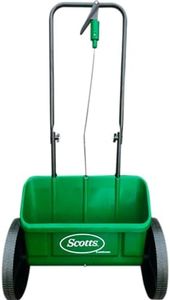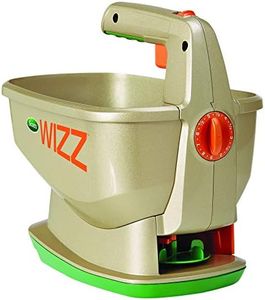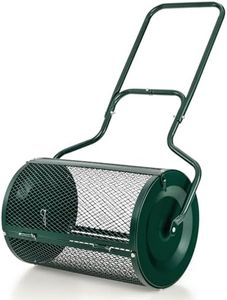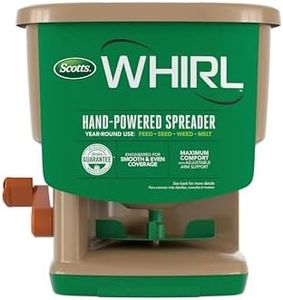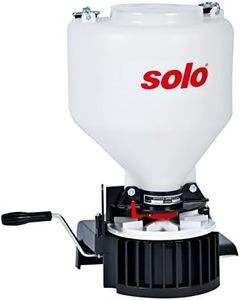We Use CookiesWe use cookies to enhance the security, performance,
functionality and for analytical and promotional activities. By continuing to browse this site you
are agreeing to our privacy policy
10 Best Lawn Spreaders
From leading brands and best sellers available on the web.Buying Guide for the Best Lawn Spreaders
Choosing the right lawn spreader is important for achieving an even application of seeds, fertilizers, or other lawn care products, which can make a huge difference in your yard's health and appearance. To pick the best lawn spreader for your needs, it's helpful to understand the main features and specifications that set them apart. Think about the size and terrain of your yard, what materials you'll be spreading, and how much control and convenience you want during use. By understanding the key specs, you can better match a lawn spreader to your gardening style and property size, making lawn care tasks easier and more effective.Spreader TypeThe main types of lawn spreaders are broadcast (rotary), drop, and handheld. Broadcast spreaders disperse material in a wide, even pattern as you walk, making them great for covering large areas quickly but a bit less precise around edges or narrow spaces. Drop spreaders release material directly below the hopper, offering precise control, especially for smaller lawns or areas requiring careful application. Handheld spreaders are compact and good for spot treatment or very small lawns. Consider your lawn’s size and layout: larger, open areas benefit from broadcast models, while smaller, irregular spaces might be better served by a drop or handheld spreader.
Hopper CapacityThe hopper capacity refers to how much material—like seed or fertilizer—the spreader holds at one time. Smaller hoppers generally range from 5 to 20 pounds, suitable for compact spaces or occasional light use. Medium capacities are around 20 to 50 pounds, fitting most standard-sized yards, while large hoppers above 50 pounds are designed for big lawns or commercial use. Choosing the right capacity helps avoid frequent refills: pick a size that matches the area you typically treat in one session without being too bulky or heavy to handle comfortably.
Spread WidthSpread width is the area covered by the spreader in a single pass. Broadcast spreaders usually offer wider coverage, ranging from about 3 to 12 feet or more, while drop spreaders cover just the width of the hopper, often around 2 to 3 feet. A wider spread width reduces the number of passes needed, saving time on larger lawns, but requires more careful control around flowerbeds or sidewalks. For smaller lawns or areas needing precision, a narrower width might be more practical and ensure you don’t waste product.
Adjustment SettingsAdjustment settings let you control how much material is being dispensed per pass. Simple models may have just a few preset settings, while more advanced spreaders allow fine-tuning for various product sizes and application rates. This feature is important for accurate spreading: too much can waste product and harm your lawn, while too little may not give the desired results. If you use your spreader for different products or need precise control (for example, with expensive fertilizer), look for a model with more granular adjustment options.
Ease of Use and ManeuverabilityThis refers to how comfortable and practical the spreader is to operate. Factors to consider include handle design, wheel size and quality, overall weight, and how easy it is to push or carry. For large or uneven lawns, big, rugged wheels make it easier to move over bumps or grass. Ergonomic handles and smooth operation can make spreading less tiring. If you need to store the spreader in a small space, look for compact or foldable options. Test out a model if possible, or check reviews for feedback on maneuverability.
Material and Build QualityLawn spreaders are often made from plastic, metal, or a combination of both. Plastic models are lightweight and rust-resistant, but may not be as durable for heavy-duty use. Metal parts can provide more strength, especially for the frame or spreader plate, but look out for rust resistance or weatherproof coatings. The build quality affects the spreader’s lifespan and reliability. If you plan to use your spreader frequently or in varying weather conditions, durability should be a priority.
Cleaning and MaintenanceGood maintenance ensures your spreader works well over time. Some spreaders are easier to empty, clean, and store than others. Features like removable hoppers, easy-access parts, or rust-proof finishes make maintenance simpler. If you use corrosive materials (such as some fertilizers), frequent cleaning is essential. Choose a model that won’t become a hassle to keep in good condition, especially if you plan to use it throughout the year.
